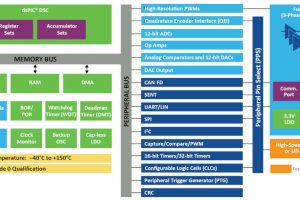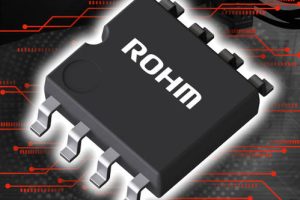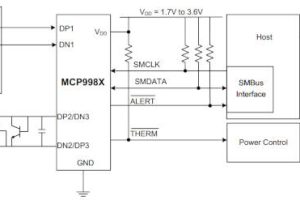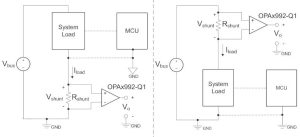
There are single (OPA992-Q1), dual (OPA2992-Q1) and quad (OPA4992-Q1) versions.
Intended to be general purpose, the amplifiers’ differential and common-mode input ranges reach the supply rails. 115dB common-mode rejection is claimed, and the devices are rated to be used as comparators as well as op-amps.
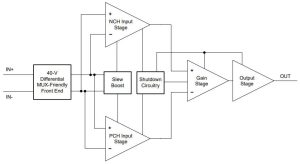 TI also calls them “mux-friendly” (see below), due to them having a patented input architecture that avoids back-to-back diodes across the inputs and settling time issues when the amplifiers are used a output buffers for fast multiplexers.
TI also calls them “mux-friendly” (see below), due to them having a patented input architecture that avoids back-to-back diodes across the inputs and settling time issues when the amplifiers are used a output buffers for fast multiplexers.
“Some amplifiers attempt to solve this problem with high slew rate, but trade off power consumption and stability,” according to the company. “TI’s precision amplifier team developed a unique technology that combines high slew rate with a diode-less front end to achieve accurate signal processing without the trade-offs of high-slew rate amplifiers.”
Typically, the amplifier inputs offer ±210µV offset, ±0.25µV/°C drift and ±10pA bias, while noise is (7nV/√Hz at 1kHz and 4.4nV/√Hz at 10kHz. Slew rate is 32V/µs and the outputs are short-circuit rated at ±65mA.
ESD classifications are HBM level 2A and CDM level C6.
Operation is over ±1.35V or 2.7V to ±20V of 40V (2.4mA/amplifier quiescent) and 40°C to 125°C.
Packaging is 5 pad 2 x 1.25mm SC70 or 2.9 x 1.60mm SOT-23 for the single, 8 pad 3 x 3mm VSSOP or 4.9 x 3.9mm SOIC for the dual and 14 pad 5 x 4.4mm TSSOP or 8.65 x 3.9mm SOIC for the quad.
The OPAx992-Q1 op-amps data sheet can be found here
For an in-depth description of the ‘mux-friendly’ input, TI has an application note
 Electronics Weekly Electronics Design & Components Tech News
Electronics Weekly Electronics Design & Components Tech News
